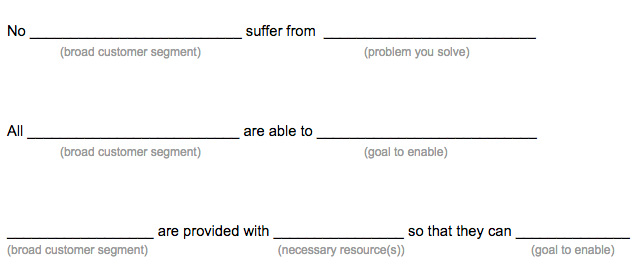
This series follows a real life startup to show how you can craft the strategy and messaging you need to launch your business idea and validate it with customers.
Origin Story of a New Product
Over the past year, my wife Lisa got involved with her first startup venture. Her day (and sometimes night) job is as a licensed clinical social worker and her primary focus is working with patients who are on hospice. As a result of that expertise, it wasn’t surprising that her path into entrepreneurship came through the topic of death and dying.
Her work in hospice is actually what led Lisa to meet her co-founder, Lori. Nine years ago, Lori’s husband Joe was battling pancreatic cancer and Lisa was their family’s social worker.
Lisa and Lori developed a strong bond during the time when Joe passed away. Over the years that bond evolved into an amazing friendship.

They didn’t know it then, but the incredibly challenging discussions Lori was having with Joe during his illness created the initial inspiration point for this new venture.
The struggle of talking openly about death was a huge challenge for Lori and Joe. Despite having done a lot of practical preparation with wills, advance care directives, and life insurance, there were lots of questions that went unanswered. Some of that was due to avoidance and some of it was simply not knowing what to ask.
That same challenge was something Lisa saw countless families struggle with in her work. Frankly, it’s a challenge just about everyone shares. The topic of death always ranks highly in the category of “biggest fears” usually hanging out right behind public speaking.
So, what do you do when you’re dealing with one of the biggest, scariest, most intimidating problems anyone can ever face in their lives?
Make a game out of it, of course!
Lisa and Lori’s startup centered on creating a party game called The Death Deck (Sign up on their site if you want to learn more!). The focus of the game is to help people get more comfortable with talking about death and dying.
They do this by asking fun and interesting questions about people’s perspectives on death to generate discussions, tap into stories, and give people the freedom to talk about this uncomfortable topic openly. By changing the way people talk about death, the hope is that they’ll be more prepared to deal with the impact of it in their own lives.
Lisa and Lori are both super smart, skilled, creative, and determined women. And like all entrepreneurs they’ve needed every ounce of those talents to tackle this challenge.
Creating a game focused on one of people’s deepest rooted anxieties that’s truly fun to play is a tough challenge.
Finding the right way to market that game and get people excited about it, is a whole other beast.
That marketing challenge is what this series is focused on.
The Need For Real Customer Feedback
Lisa and Lori had already done some initial testing of their concept with friends and family. They developed a nice MVP (Minimum Viable Product, aka. “Test Version”) of the game, gathered feedback, and got some important validation on what worked and what didn’t.
As a participant in some of those tests myself, it’s been incredible to watch the game in action. The game play allows friends and couples who’ve known each other for years or even decades to discover new, meaningful things about each other. And people have a great time doing it!
The question they needed to tackle now was around marketing this game to their real target customers.

They needed to validate that people who didn’t know them and had never heard of this game would show interest in purchasing it. To test that out, they needed to crystallize the strategy and messaging that would highlight the amazing benefits their customers would get from playing the game.
Honing in on this strategy and messaging and using it to validate people’s interest was a critical step before they made the leap to crowdfunding or any other form of production.
So, the plan was to take all the great thinking and work they’d done up to this point and focus it into a strategy and message for a basic website. The site would have just one goal: get people to submit their email address if they were interested in buying the game.
Getting people to provide a piece of personal information like an email address isn’t the same as making a purchase, but it’s a strong indicator that the value of the product is being conveyed.
It’s also way less expensive and risky to validate people’s level of interest with a test like this before you run off and build an actual product.
One last benefit is that this process starts to build an email list of people who care about what you’re doing. They’re the first fans of the product. They’re the early adopters. They’re the ones you’ll have a head start on to make a sale with when the time comes. They may even be the ones who go on to evangelize the product to others.
The Essential Tools to Get Feedback
While Lisa and Lori got a fantastic start on validation with their MVP, it’s important to note that it’s not a requirement to create a test version of your offering before you go through the process in this series. All of these steps can be completed even if you’re still at the idea stage.
If you’ve done some initial work to help fuel this process that’s great. If you’re still figuring things out this will help you do it in a more structured way.
The steps in this process are the most stripped down, lean version of a larger process we use to define the strategic direction of a business and then generate effective messaging to market it.
The steps we’ll cover in this series are:
- Your Vision [YOU ARE HERE!]
- Your Target Customers’ Jobs
- Your Competition
- Your Offering and Its Features
- Your Tone of Voice and Messaging
The goal of this was to focus on only the most fundamental elements, so that you can start getting feedback as quickly as possible.
The sooner you start to get that feedback, the sooner you’ll know what to tweak about your idea.
Remember, whether you validate that people love your idea and you keep going, or you invalidate it and need to change course, you win!
The point isn’t to make a ton of money (yet!), the point is to learn what’s working. By taking just a small amount of time to do that up front, you could save yourself months (or years!) and thousands of dollars fumbling around in the dark on your own.
This series will walk through all the steps in the process using the real life example of The Death Deck game.
With that, let’s start on Step 1!

Step 1: Your Vision
This step will help you define:
- The large scale impact you hope to make
- The audience your business aims to serve
Why it’s important:
You need to establish the overarching guardrails for where you’re headed and what you’re hoping to accomplish.
Your Vision Statement is meant to describe an envisioned future for the world where you’ve succeeded in accomplishing everything you’ve set out to do.
This is critical for giving you that zoomed out perspective of your overall direction. It defines what you’re looking to achieve on a broad level and who it benefits.
Exercise:
Fill in each option to play with different approaches for wording what you aim to do:

Visions Statement Example For The Death Deck:
Adults are able to talk openly and comfortably about death and dying so that they’re more prepared to address and handle the real impact of those topics in their lives.
Key Takeaways:
Note that this doesn’t speak to specific methods or tactics for how the Vision will be executed. It strictly focuses on the results of the work as a whole. This is important because the way you go about achieving your Vision is likely to change over time. It may include new ideas you haven’t thought of yet. Despite any future changes, your Vision should remain largely intact.
It’s also important to note that we’re limiting the scope of what we do to things we can directly impact. For The Death Deck, this means focusing on getting people comfortable talking about death and dying so they’re more equipped to handle issues around those topics. How those abilities ultimately play out in their lives is up to them.
Ready For More?
That’s all there is to step one. Easy, right?
Step two shows you how to define the “Jobs” (aka. needs, problems, desires) you’re addressing in the lives of your customers.
Click here to get started on Step 2, Customer Jobs.
Need Help?
If you ever get stuck on any of these steps you can get more free resources in our Field Guide.
And if you want help from us personally, you can reach out for a free consultation any time.
If you just want free stuff to help you think about your business in new ways sent to your inbox, sign up below!


